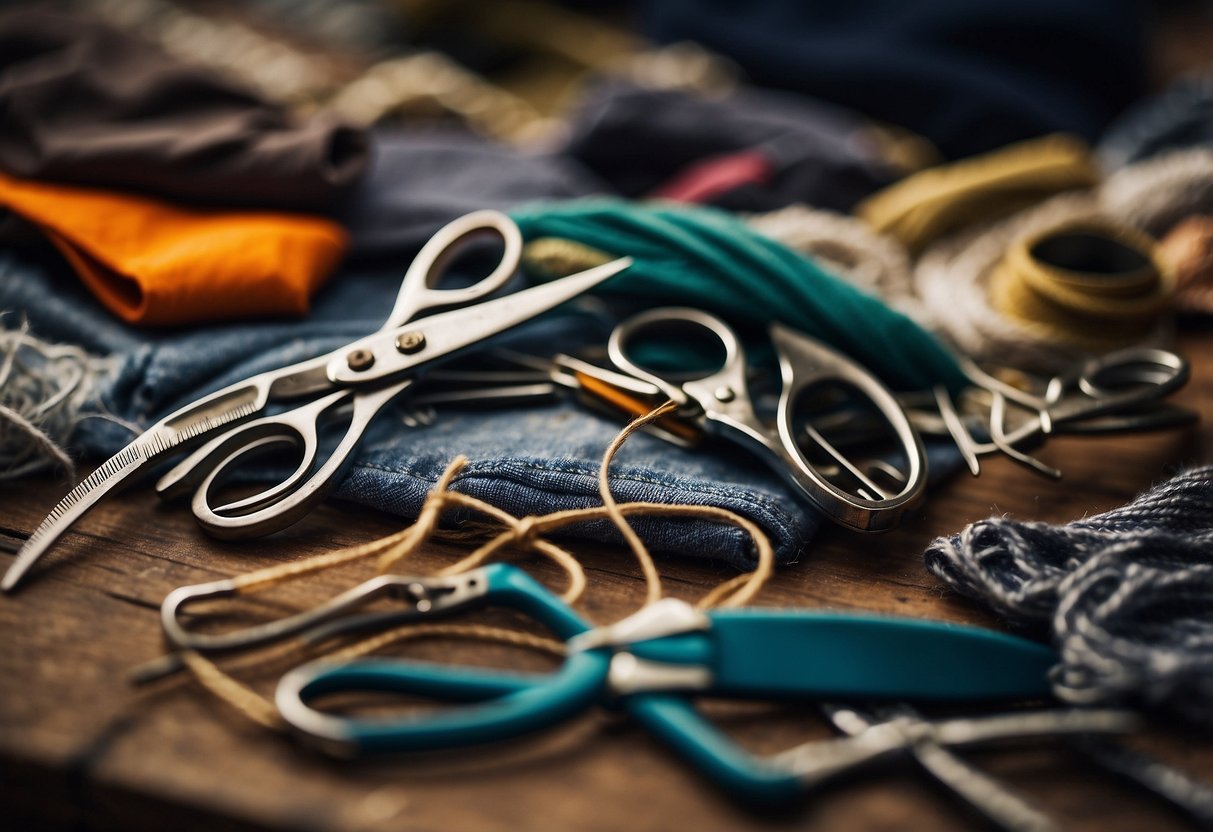DIY Clothing Alterations: Save Money by Fixing and Upcycling Your Wardrobe
Creative Upcycling Ideas and Techniques

Upcycling your clothes can infuse new life into your wardrobe through personalized touches and creative reinventions. The following techniques reveal how to add unique flair with embroidery and embellishments, or transform old textiles into entirely new pieces.
Adding Embroidery and Embellishments
Embroidery and embellishments offer a straightforward method to refresh clothing. Embroidery allows intricate patterns to be stitched onto fabric, adding texture and visual interest. Designs can range from simple monograms to complex floral patterns, enhancing the garment’s aesthetic.
Additionally, embellishments such as beads, sequins, and patches can provide further personalization. Sew on a patch with a favorite design or add sequins for a touch of sparkle. Appliqué is another technique where fabric pieces are sewn onto the garment, creating layered designs. These additions not only beautify the item but also mend any small tears or worn-out areas, extending the lifespan of the clothing.
Repurposing Old Textiles into New Pieces
Repurposing turns unused or outdated garments into new, trendy pieces. An oversized shirt can be transformed into a stylish dress or a child’s old sweater can be reshaped into a cozy hat or mittens. These kinds of projects require basic sewing skills and creativity.
Patchwork is another effective technique. Combining fabric scraps from different sources can make a new, cohesive piece. For instance, use denim scraps to create a patchwork quilt or mix various textiles to design a unique skirt. Tie-dye methods can also revive faded clothes with vibrant, new patterns. This not only reduces waste but also creates one-of-a-kind wardrobe items.
Sewing Hacks for Efficient Alterations
Discover key techniques for addressing common clothing issues and saving time during your sewing projects. These methods will help you quickly solve everyday problems and make your alterations more efficient.
Quick Fixes for Common Clothing Issues
Small holes in clothing often require immediate attention. One effective hack is to use a zigzag stitch to secure the fabric edges and prevent fraying. This simple step can extend the life of your garments.
For a too-long hem, using fusible tape can be a quick solution. Simply place the tape between the folded hem and the fabric, then apply heat with an iron to secure it. This method takes minutes and eliminates the need for sewing.
When dealing with loose buttons, a dab of clear nail polish on the button thread can act as a sealant. This technique ensures the thread stays in place and the button remains secure.
Smaller alterations, like tightening a loose waistband, can be managed by adding a discreet elastic band inside the waistband. This quick adjustment can improve the fit without extensive sewing.
Time-Saving Sewing Tricks
Pinning fabric before sewing is often advised, but clips can be much faster and just as effective. Clips hold the fabric securely and can be removed more easily, speeding up the sewing process.
Using a double needle can cut sewing time in half. With this tool, create parallel rows of stitching in a single pass, ideal for hemming and decorative stitches. It also provides a professional finish with minimal effort.
A sewing machine with an automatic thread cutter can significantly reduce the time spent on each project. This feature trims the thread at the end of each seam, eliminating the need to manually cut thread after every stitch.
Replacing traditional thread with elastic thread in certain areas can simplify alterations. When used in seams or hems, elastic thread expands and contracts with the fabric, reducing the need for perfect measurements and adjustments.
Simple tricks like these can make a noticeable difference, enabling smoother and quicker alterations.



